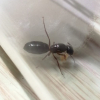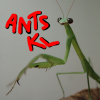Location of collection: Kuala Lumpur, Malaysia
Date of collection: Early of May 2021
Habitat of collection: Rainforest
Length (from head to gaster): Queen: 13mm, Worker: 6.5mm
Color, hue, pattern and texture: Brownish yellow & shiny for worker. Brownish black, hairy & shiny for queen. (English is not my mother tongue, color description may not accurate.)
Distinguishing characteristics: Egg to larva to cocoon then to ant. For queen, I don't see any petiole, just a thorn from thorax.
Distinguishing behavior: The queen will have rest period for egg laying. When being disturbed, the worker ants will show random sign of spasm (ant will suddenly lean forward and backward rapidly).
Photos:


























